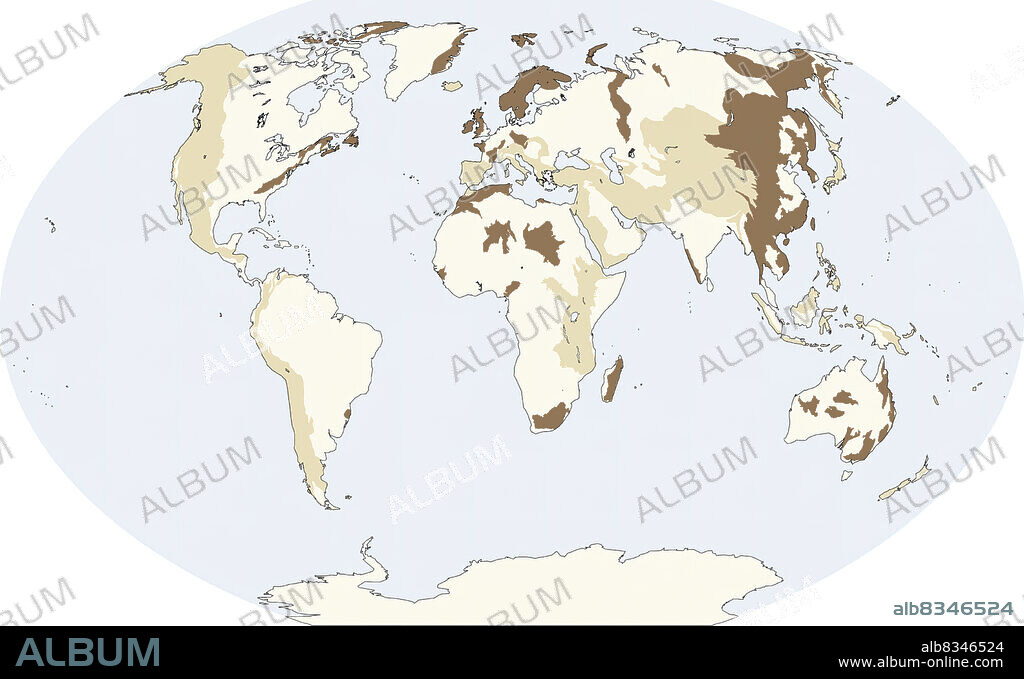alb8346524
The shape of a mountain depends, in large part, on its age. Formed by recent tectonic shocks, the youngest mountain ranges on the planet (Alps, Himalayas, Rockies, Andes, Caucasus) are very jagged, with steep slopes and pointed summits. Most of them have not finished rising, since the slow movements of lithospheric plates continue to reshape the landforms. The Alps, for example, result from an enormous uplift that took place about 50 million years ago, when the Eurasian Plate collided with the African Plate. The oldest mountains (Urals, Appalachians, Australian Cordillera, Drakensberg) look less rugged: they have been smoothed out by erosion, which scrapes material from the slopes and deposits it in the hollows. The Appalachians, created more than 300 million years ago, are among the oldest mountains in the world.

|
Add to another lightbox |
|
Add to another lightbox |



Caption:
The shape of a mountain depends, in large part, on its age. Formed by recent tectonic shocks, the youngest mountain ranges on the planet (Alps, Himalayas, Rockies, Andes, Caucasus) are very jagged, with steep slopes and pointed summits. Most of them have not finished rising, since the slow movements of lithospheric plates continue to reshape the landforms. The Alps, for example, result from an enormous uplift that took place about 50 million years ago, when the Eurasian Plate collided with the African Plate. The oldest mountains (Urals, Appalachians, Australian Cordillera, Drakensberg) look less rugged: they have been smoothed out by erosion, which scrapes material from the slopes and deposits it in the hollows. The Appalachians, created more than 300 million years ago, are among the oldest mountains in the world.
Credit:
Album / Universal Images Group
Releases:
Model: No - Property: No
Rights questions?
Rights questions?
Image size:
3600 x 2201 px | 22.7 MB
Print size:
30.5 x 18.6 cm | 12.0 x 7.3 in (300 dpi)
Keywords:
49473 • COLOR • COLOUR • CONTINENT • CONTINENTAL RELIEF FEATURE • EARTH • GEOGRAPHY • ILLUSTRATION • MOUNT • MOUNTAIN • MOUNTAINS • MOUNTAINS. • OLD MOUNTAIN • YOUNG MOUNTAIN
 Pinterest
Pinterest Twitter
Twitter Facebook
Facebook Copy link
Copy link Email
Email

